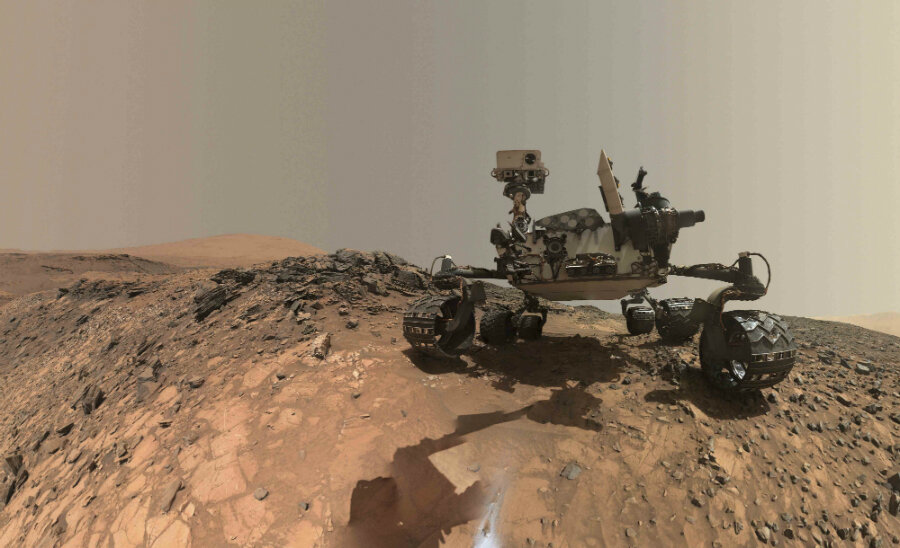Astronomical anniversary: Curiosity rover celebrates four years on Mars
Loading...
NASA's Curiosity rover celebrates a landmark anniversary on Aug. 5, 2016, but there won't be any party on Mars' dusty surface for the space vehicle.
Exactly four years have passed since Curiosity's rough landing on Aug. 5, 2012, beginning its mission searching for clues to help answer the question: Is there life on Mars?
Despite being beset by challenges, Curiosity’s now four-year-long mission has helped uncover many mysteries of the Red Planet.
"Hopefully, the big results aren't all behind us," Mars Science Laboratory project scientist Ashwin Vasavada told Space.com. "We still would love to find a really whopping signature of organic molecules, so that we get an idea of what was present on ancient Mars."
It didn't take long for Curiosity to get to work. The rover experienced its first breakthrough discovery soon after it landed in 2012: Located near its landing site in Gale's Crater was an ancient lake and stream system. Not only did the system offer evidence of a body of water, but Curiosity also discovered hints that the planet once had conditions conducive to microbial life.
After exploring its landing zone, Curiosity took its mission on the road. The rover traveled five miles across Mars' dusty surface to the slopes of Mount Sharp, a three-mile high mountain in the middle of Gale Crater.
The rover is no speed demon – it took more than a year to travel the miles from its landing site to Mt. Sharp, leaving in the summer of 2013, and arriving in September 2014.
But Curiosity kept busy on its way, drilling into rock samples to search for clues to past or present life on Mars.
While the rock samples didn't reveal a secret colony of Martians, they did give researchers clues into how Mars' environmental conditions have changed over time.
As Curiosity traveled up the base of the mountain, it discovered a layer of mudstone, like sediment typically found on the bottom of lakebeds on Earth – further evidence that Gale Crater likely once housed a lake. The mudstone layer is so thick that it indicates that if there was a lake, it could have been there for millions, or even tens of millions, of years.
"Our view of Gale Crater as an ancient habitable environment has grown tremendously, both spatially and through time in Mars history," Dr. Vasavada said at the time. "And that's really what the rest of the mission will be about as well."
In December 2014, Curiosity discovered a spike in methane levels in Gale Crater, an exciting discovery for mission scientists, for whom the presence of methane gas signals possible evidence of life.
While the methane spike that Curiosity detected doesn’t provide conclusive evidence for life, scientists are aware that life on Earth produces great quantities of methane. So scientists supposed life on Mars could do the same, but they do remain skeptical.
Curiosity’s mission met with a snag in the spring of 2015 when a drill short-circuited and curtailed Curiosity’s action. Scientists were able to discover the source of the problem, and correct it to bring Curiosity back to its full operational abilities.
And not long afterward, scientists released a study indicating that Curiosity had discovered a type of nitrogen that could have been used by microbes to build amino acids.
"Had life been there," Jennifer Stern, lead author of the nitrogen study, told Space.com at the time, "it would have been able to use this nitrogen."
Curiosity has also done work in identifying and reading seasonal changes on Mars, making discoveries that scientists say could aid humans when they set foot on the planet, reported The Christian Science Monitor this spring.
Most recently, Curiosity went into "safe mode," or a partial shutdown, after a software mismatch. Once again, engineers soon had the rover back on line and exploring.
After its initial mission period ended in 2014, NASA approved a two-year extension for the rover. Project scientists hope to renew missions indefinitely, as long as Curiosity is still operating well. The rover is expected to see many more sunsets on its faraway home.








